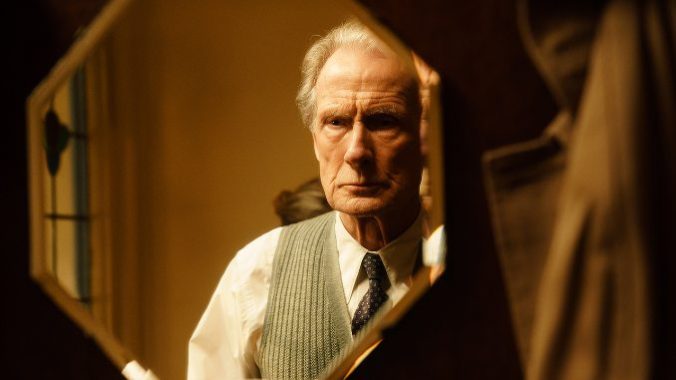Living Remains Relevant as It Adapts Akira Kurosawa’s Ikiru

Like many English words, “living” is a curious one. As an adjective, it can refer to the state of one’s being. To be alive, perhaps even full of vigor. Or maybe one could barely be living, just barely hanging on by a thread. As a noun, it can refer to the money one makes for performing a job. The word is employed in both senses in Oliver Hermanus’ Living, starring Bill Nighy in the central role of Mr. Williams, a taciturn bureaucrat going about his humdrum life in post-war London—except he’s not really living. Until he receives a medical diagnosis, that is.
I watched Living roughly halfway through the 2022 Toronto International Film Festival. By this time of the festival, many film critics and writers are in a zombie-like state. You’ve watched so many films you’re in a daze, trying to separate the plotlines from the first film of the day to the third or fourth. You become accustomed to folding your body into those movie theater seats, figuring out slow movements to revive numb arms or legs. Stepping outside of the movie theater seems like a salubrious exercise.
I remember walking into a pretty packed theater to watch Living. Perhaps it was the still-unusual (to someone living through a pandemic) sight of so many people in a movie theater. Or maybe because I had skipped lunch. Or that I had made it into the theater in the nick of time. Either way, I was feeling anxious. I couldn’t explain it. But I’d heard this was a good film. Besides, who can resist Nighy’s on-screen antics?
Except, Nighy is rather restrained in this role as a buttoned-up civil servant in the Public Works Department in London’s City Hall. In a charmingly choreographed opening, we hear about Mr. Williams through his colleagues, schooling the new hire Peter Wakeling (Alex Sharp). He’s described as a “bit like church.” The men, all dressed in suits and bowler hats, offer up a short laugh and tight smiles. When Nighy arrives on screen moments later, you barely hear him speak above a whisper, offering up no more than pithy observations or a furrowed brow. He’s been working at the same desk for decades, and his job is usually to merely move piles of files filled with futile paperwork around.
Then he receives a medical diagnosis. Mr. Williams is dying. He responds to the grave news with a circumspect, “Quite.” However, the death sentence changes something in Mr. Williams. And he attempts to make his last days of life matter. He carouses around with a bon vivant (Tom Burke) after a chance meeting. He enjoys the company of his cheerful former colleague Margaret Harris (Aimee Lou Wood), envious of her zest for life. And then he takes on a project that he had more or less papered over at work, leaving everyone marveling at his turnaround. What happened to Mr. Williams?
Living is an exquisitely handsome film, written by novelist Kazuo Ishiguro. It brings 1950s London alive in a such a genteel way that the viewer is bathed in its gorgeousness, even as Mr. Williams and his colleagues push paper around, or Mr. Williams attempts to make small talk with his son. And so when Mr. Williams does manage to see the project he’d undertaken through, the film suggests a small victory in the middle of tedium. Its ending offers up a glimmer of hope, even if there are elements of pragmatism to temper matters.
By the time the credits rolled, my anxiety had left me. I was taken in by Nighy’s turn as Mr. Williams, playing the role with a weathered charm. It felt like a balm of a film, and immediately made me seek out the original that inspired it: Akira Kurosawa’s Ikiru.
-

-

-

-

-

-

-

-

-

-

-

-

-

-

-

-

-

-

-

-

-

-

-

-

-

-

-

-

-

-

-

-

-

-

-

-

-

-

-

-








































